10 Top-Rated Tourist Attractions in Rome
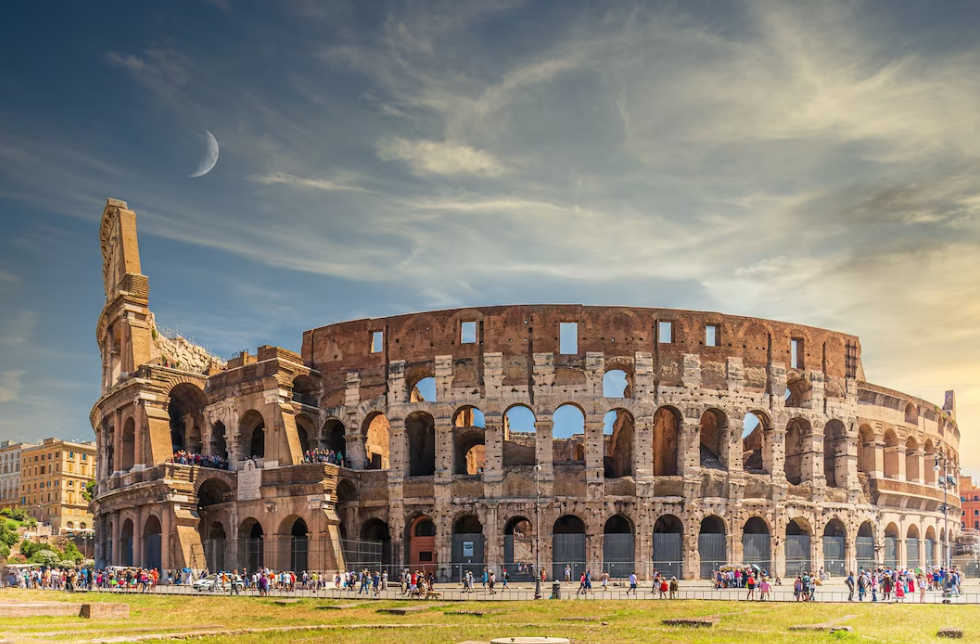
With a wealth of antiquities and Christian symbols, selecting the first spot to explore in this city can be overwhelming. Of course, personal preferences decide what to explore, but there are certain must-visit locations that stand for Italy and rank as world-class landmarks, which include the Colosseum and Pantheon.
It’s advisable to mix up your programmes so that you don’t visit several consecutive ancient sites or churches. Make sure to add some top tourist sites such as the Spanish Steps and the iconic Trevi Fountain to your itinerary.
Given the vastness of Rome, it can be pretty challenging to know where to begin. Hence, even the most zealous voyagers should find time to relax and relish la dolce vita in a park or sidewalk café. Make the most of this handy list of top attractions to locate the best spots to visit in Rome.
1. Villa Borghese Gallery and Gardens
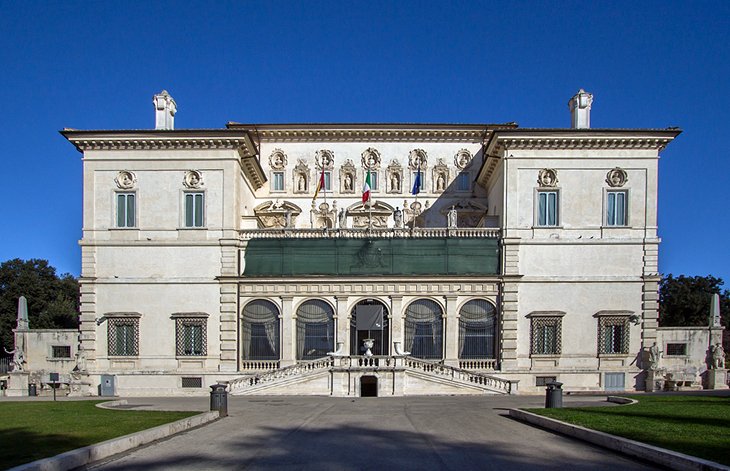
Containing two museums and known as one of Rome’s largest parks, the Borghese Gardens showcase a variety of attractions.
The Villa Borghese, initially erected as a party villa and to exhibit the Borghese art collection, contains paintings, sculptures, mosaics, and reliefs, mostly from the 15th to 18th century, including works by artists like Raphael, Titian, Caravaggio, and Rubens.
Another villa worth observing is Villa Giulia, which was built as a summer haven for the 16th-century Pope Julius III and currently houses the Etruscan Museum. Various other villas are from the world exposition that took place in Rome in 1911. This English-style landscape garden also features walking paths, ponds available for renting row boats, and bike and surrey rentals to help you explore the park.
Additionally, there’s a great zoo, Bioparco di Roma, having naturalized enclosures and a miniature trail connecting its various sections. The park has many attractions for children, such as playgrounds, pony rides on weekends, and occasional puppet shows.
2. Vatican City
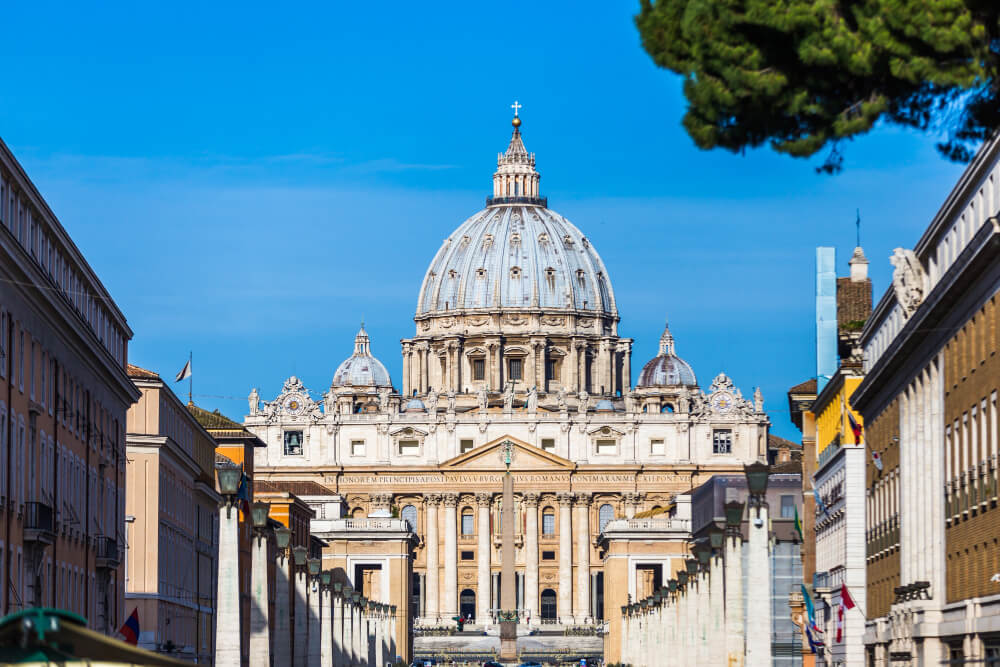
The Vatican, being the smallest independent state in the world, occupies an area that is less than half a square kilometer. Most of the area is enclosed by the Vatican walls, whereby feature the Vatican palace, gardens, St. Peter’s Basilica, and St. Peter’s Square. This region is governed by the Pope, who is the supreme head of the Roman Catholic Church. Even though it is compact, there are various things to see, including museums and the grand basilica.
St. Peter’s Basilica is home to Michelangelo’s Pieta as well as other statures and altars by renowned artists such as Bernini. The most striking aspect of the Vatican museums is the breathtaking Sistine Chapel, where Michelangelo bestowed his masterpiece on the frescoes’ ceiling.
Furthermore, the Vatican Palace boasts Raphael Rooms, the Borgia Apartments, the Vatican Library, and several museums such as the Picture Gallery, Etruscan Museum, and Museum of Secular Art, among others. These museums showcase diverse collections, ranging from papal coaches to 20th-century art that reflects religious themes.
3. The Pantheon
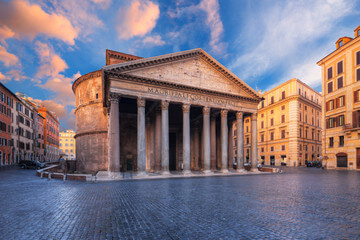
Despite the removal of gilded bronze roof tiles by Pope Gregory III and the stripping and melting down of its bronze roof to cast a canopy over the altar in St. Peter’s and cannons for Castel Sant’Angelo by Pope Urban VIII, the Pantheon regarded as the best-preserved monument of Roman antiquity – remains remarkably intact after 2000 years.
Its repair after suffering from fire damage in AD 80 showcases the impressive technical mastery of Roman builders in creating the resulting brickwork.
The interior’s 43-meter dome – a supreme achievement of Roman interior architecture – hangs suspended without any visible supports, which are cleverly hidden within the walls, and only the nine-meter central opening serves as the building’s source of light.
The harmonious effect of the interior is due to the building’s proportional height, which is identical to its diameter. Although the first Christian emperors forbade using the pagan temple for worship, Pope Boniface IV dedicated it to the Virgin and all Christian martyrs in 609.
Since then, it has become the burial site of Italian kings – with Victor Emmanuel II occupying the second niche on the right – and other celebrated Italians, including the renowned painter Raphael.
4. Roman Forum
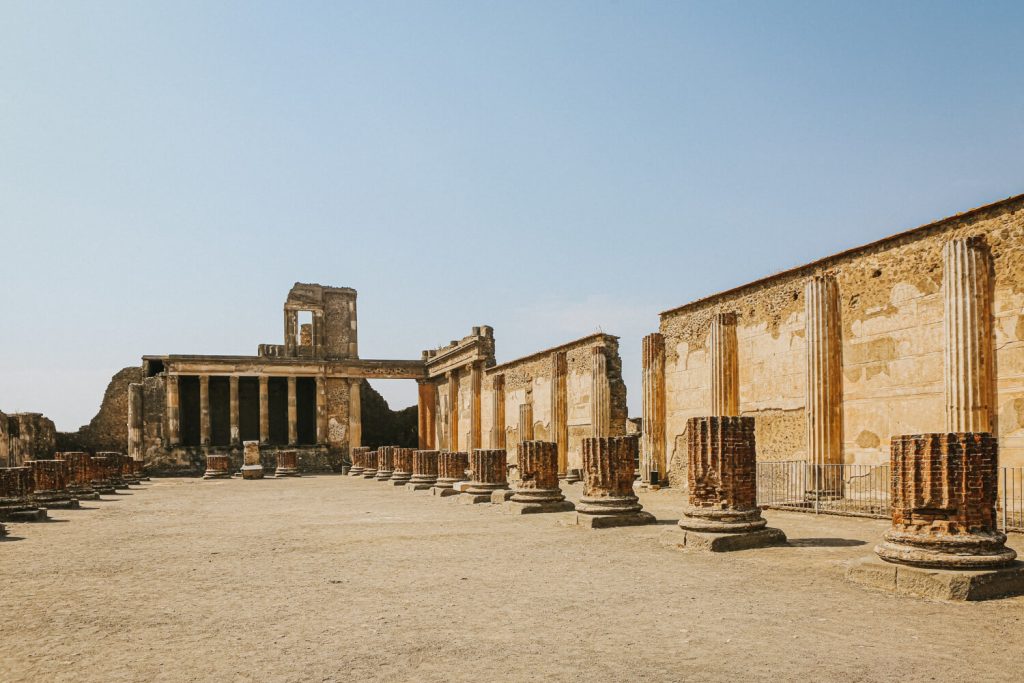
Walking through the throbbing modern city, one can’t help but feel transported back two millennia to the heart of ancient Rome. While much of the Forum’s original grandeur has vanished, the standing and fallen columns, triumphal arches, and remnants of its walls leave a lasting impression. For centuries, the Forum was the epicenter of Roman life and government, and its rich history is intertwined with that of the Western world.
The Forum housed political and religious institutions, courts, markets, and meeting places. After its decline in the seventh century, churches and fortresses were built upon its ruins and its stones were used for other buildings. It wasn’t until the 18th and 19th centuries that organized excavations unearthed the ancient structures from a thick layer of earth and rubble.
Visit the Temple of Antoninus Pius, Temple of Castor and Pollux, Temple of Saturn, Arch of Septimus Severus, Curia, Temple of Vesta, and Arch of Titus for an unforgettable glimpse into Rome’s awe-inspiring past.
5. Trevi Fountain
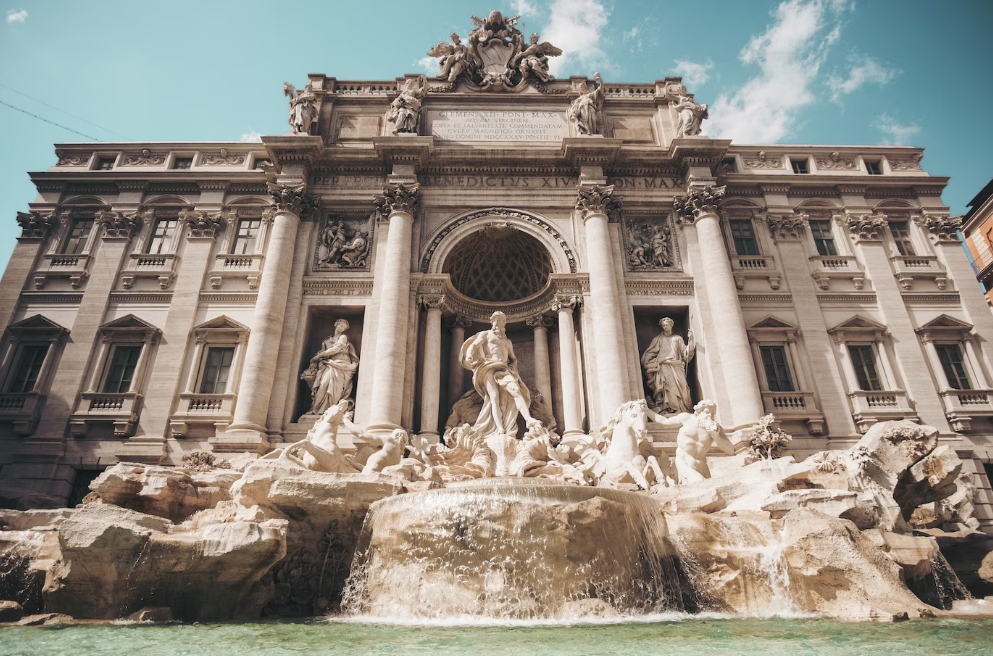
A must-visit destination for tourists in the city, this 17th-century masterpiece has become an iconic landmark featured in countless films. The Trevi Fountain (Fontana di Trevi) is believed to ensure your return to Rome if a coin is thrown into it, but only one is required.
Built using an aqueduct from the first century BC originally meant for Agrippa’s baths, the Fontana di Trevi is Rome’s largest fountain. Nicolò Salvi created it for Pope Clement XII between 1732 and 1751, positioning it against the Dukes of Poli’s palace’s rear wall.
The sculpture of the sea god Neptune with Triton, horses, and shells adorns the fountain. Coins from the coin-tossing tradition fill the fountain’s large basin, surrounded by swirling water and artificial rocks.
6. Vittorio Emanuele II Monument
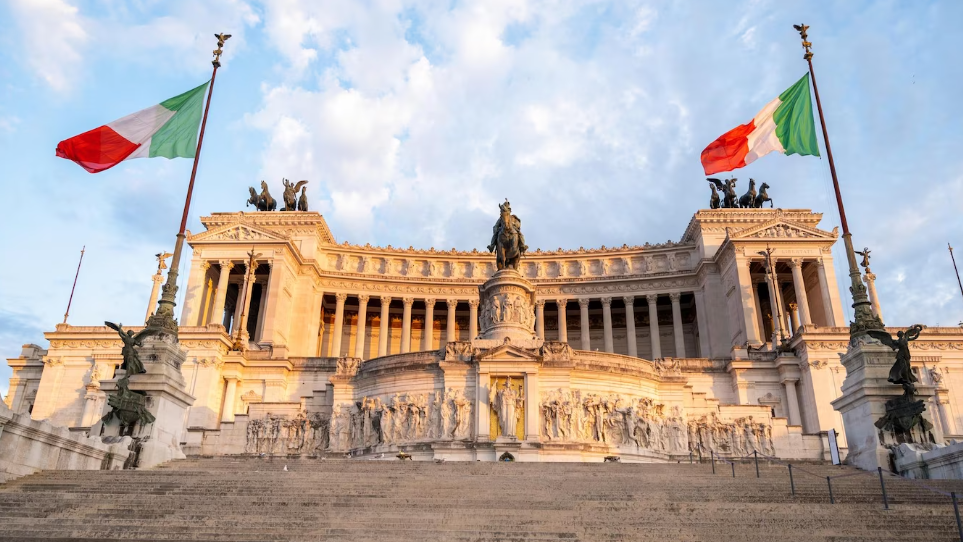
The grandiose monument, which is considered a national symbol of Italy, is rarely appreciated by Romans, who compare it to a wedding cake or a giant typewriter. Ironically, the vast neoclassical structure, which crowns Capitoline Hill, the symbolic heart of ancient Rome and overlooks the city across Piazza Venezia, can’t escape their criticism.
The monument, built between 1885 and 1935, honors King Vittorio Emanuele II, the first king of unified Italy, who is commemorated with an equestrian statue. The tomb of the unknown soldier of Italy and a museum of the country’s unification can both be found here. A lift transports visitors to the highest terrace, where they can enjoy a 360-degree view of Rome.
7. Centro Storico & the Spanish Steps
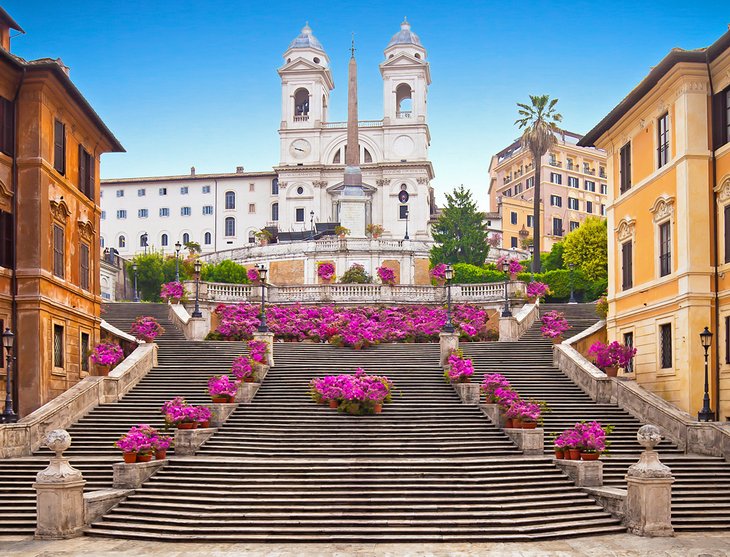
If you examine a tourist map of Rome, you’ll notice that one area is overflowing with attractions, making it challenging to decipher street names. This locale is known as the Centro Storico, the historic heart of Rome, which boasts a multitude of art-filled churches, magnificent palaces, and vibrant squares. One could effortlessly explore its ancient streets and alleys throughout their entire holiday and still have much to see.
While glimpsing the Piazza Navona, the Trevi Fountain, and the Basilica of Santa Maria Maggiore, endeavor to savor the neighborhood’s ambiance instead of rushing between each popular site. Visit lesser-known churches, such as Santa Maria del Popolo, which features works by Bernini and Caravaggio.
Pause at the Spanish Steps, the flight of uneven stairs and platforms that ascend to the French church of Trinità dei Monti. The stairs derive their name from Piazza di Spagna, the plaza at their base, and one of Rome’s most traditional squares. The steps have been a favorite spot for tourists for years.
The boat-shaped Barcaccia fountain, located at the foot of the Spanish Steps, was crafted by Pietro Bernini, father of the renowned Baroque architect Gian Lorenzo Bernini. Via Condotti, the most stylish shopping street in Rome, is situated towards the southwest of Piazza di Spagna, where the Cafe Greco, frequented by artists, writers, and musicians, reigns supreme.
8. Santa Maria Maggiore
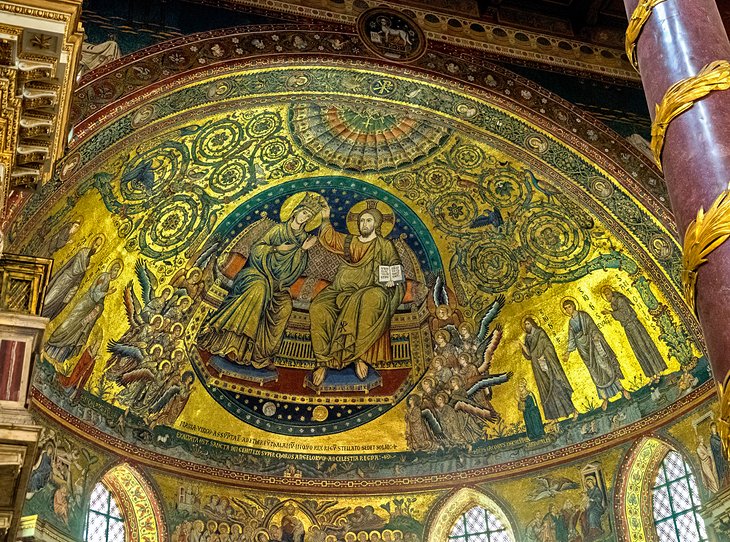
Since the fourth century, Santa Maria Maggiore has been a prominent church in Rome. Legend has it that Pope Liberius had a vision of the Virgin Mary, instructing him to construct a church where snow would fall the following day. Miraculously, despite it being August, the predicted snowfall occurred on Esquiline hill, prompting the construction of this magnificent basilica.
For over a millennium, the mass has been held daily in this impressive church, which boasts three aisles adorned with 40 columns of marble and granite. The 13th-century apse is particularly striking, adorned with mosaics depicting Old and New Testament themes, crafted by Rome’s famed mosaic artists.
The walls are decorated with Rome’s earliest mosaics, dating back to the fourth century, while the floor showcases the colorful inlaid stones of masterful artisans from the 12th-century Lake Como region. The church’s coffered ceiling is particularly noteworthy as it is adorned with the first gold brought from the Americas to Italy.
Santa Maria Maggiore is one of Rome’s four papal basilicas and holds significance as an important pilgrimage site. In addition to its architectural grandeur, the church houses the remains of two popes, adding to its historical and spiritual importance.
9. Piazza Navona
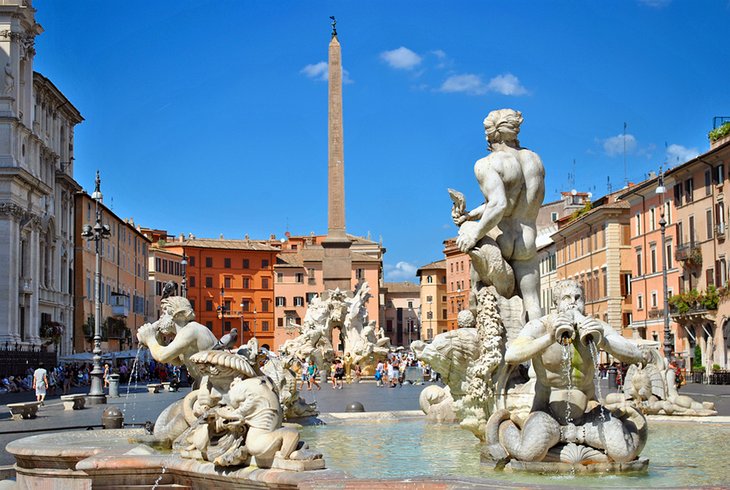
Piazza Navona, one of Rome’s quintessential Baroque squares, still bears the remnants of Emperor Domitian’s Roman stadium. Though it was used for festivals and horse races throughout the Middle Ages, it was rebuilt in the Baroque style by Borromini, who also designed the grand palaces and Sant’Agnese church on the square’s west side.
Baroque architecture’s unique interplay between convex and concave surfaces, columns, gables, windows, and piers is evident in the facade, campanile, and dome of Sant’Agnese. The crypt houses Alessandro Algardi’s 1653 masterpiece, The Miracle of St. Agnes, as well as the remains of an ancient Roman mosaic floor. Sant’Agnese served as a model for Baroque and Rococo churches throughout Italy and beyond.
While Borromini created the design of Piazza Navona and its surrounding facades, his rival Bernini is credited with the centerpiece, the gorgeous Fontana dei Fiumi. The lively fountain depicts the four rivers believed at the time to be the largest on each continent and is surrounded by figures representing the Nile, Ganges, Danube, and Rio de la Plata, along with flora and fauna native to each river.
Two more fountains adorn the square, Fontana del Moro in front of Palazzo Pamphili and Fontana del Nettuno, which has a statue of Neptune. Piazza Navona is a bustling hub, teeming with tourists, locals, street artists, souvenir vendors, cafes, and one of Rome’s outstanding Christmas markets in December.
San Luigi dei Francesi, located between the Piazza and the Pantheon, showcases three significant late 16th-century Caravaggio paintings.
10. The Colosseum and the Arch of Constantine

Similar to how the Eiffel Tower represents Paris, the Flavian Amphitheatre’s silhouette is synonymous with Rome. This remarkable structure, which is the largest of its kind from ancient Roman times, still serves as a template for sports arenas. In fact, modern football stadiums often derive their design from the oval Roman blueprint.
Construction on the Colosseum began in AD 72 under Vespasian. After his son Titus expanded it with an additional story, it was inaugurated in AD 80 with a magnificent series of games. Large enough to accommodate theatrical performances, festivals, circuses, and games, the Colosseum hosted members of the Imperial Court and high-ranking officials on the lowest level, aristocratic Roman families on the second level, and the general population on the third and fourth.
Adjacent to the Colosseum is the well-known Arch of Constantine, a triumphal arch erected by the Senate to honor the emperor for his triumph in the battle of the Milvian Bridge in 312, and as “liberator of the city and bringer of peace.” Long lines are common, but visitors can save time by taking the Skip the Line: Ancient Rome and Colosseum Half-Day Walking Tour, which also includes the informative guidance of a knowledgeable guide.




Related Posts